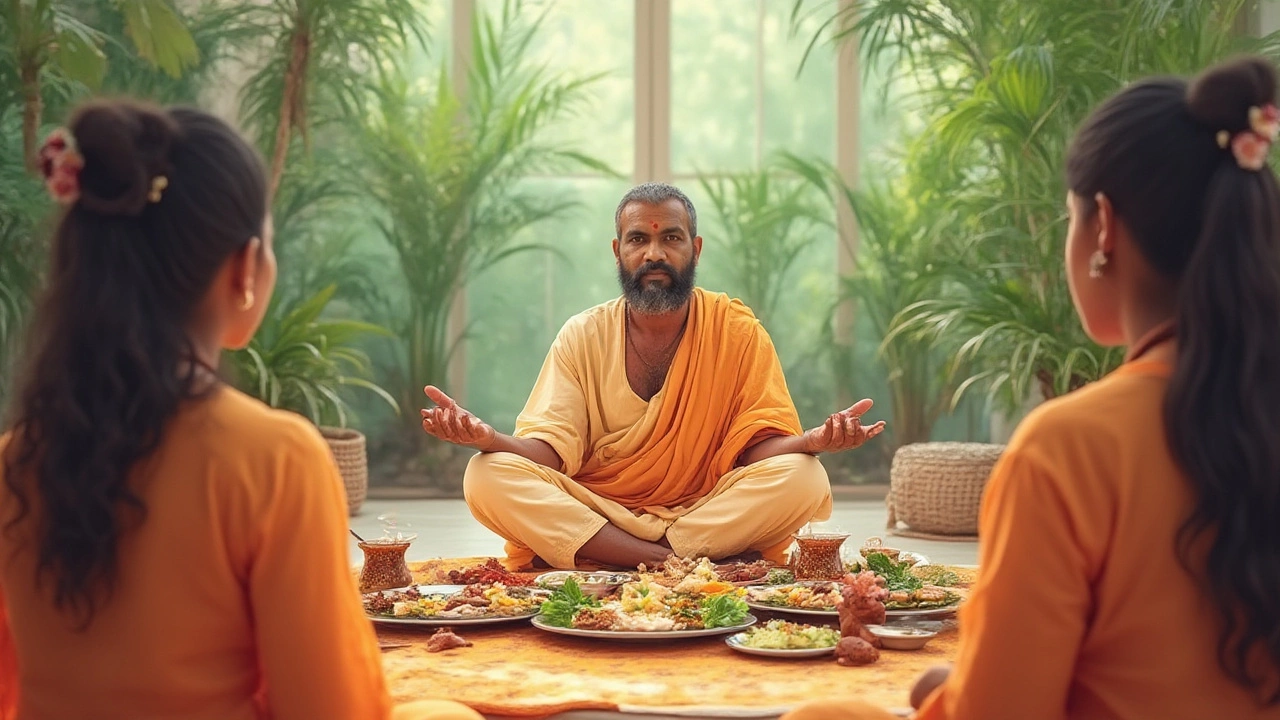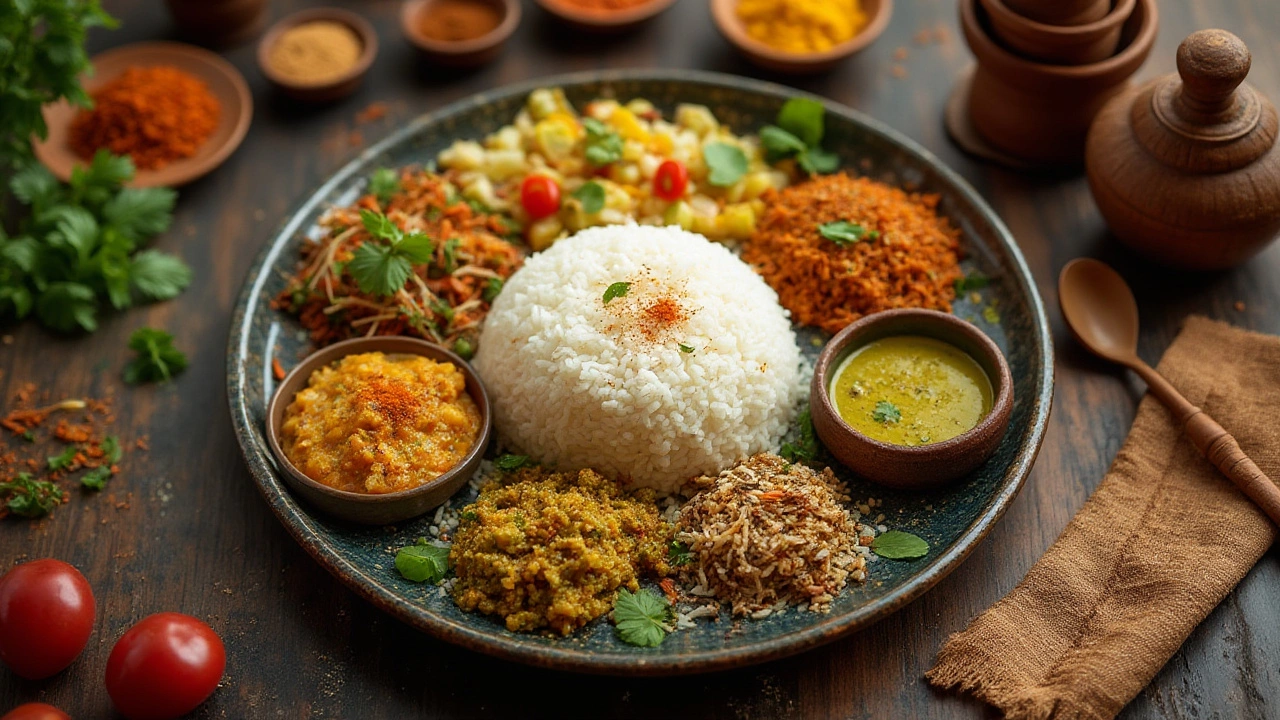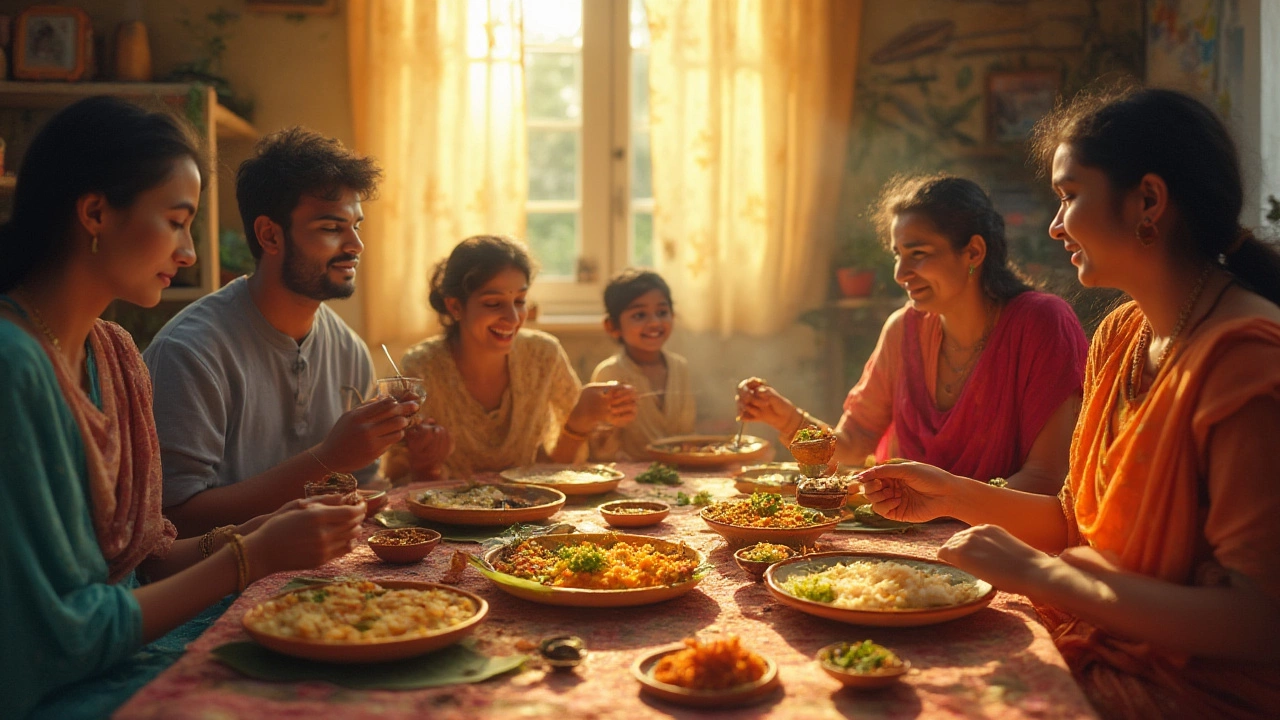Picture this: you wake up, scroll through your phone, and see a fitness influencer promising you a rock-solid metabolism with six mini-meals a day. Your friend’s doing intermittent fasting and swears by skipping breakfast. But ancient medicine—Ayurveda—has a completely different take. Rather than constant snacks or marathon fasts, Ayurveda relies on a few simple but surprisingly strict principles about when and how often we should eat. The details might not match every modern diet trend, but Ayurveda has held onto these guidelines for centuries, and there’s more science to support them than you might guess.
The Ayurvedic Perspective on Meal Frequency
Straight away, let’s hear it from the source: Ayurveda, India’s time-tested healing system, recommends eating two or three main meals a day, no constant grazing, and zero mindless snacking. The logic? Your digestive fire—called "Agni"—is supposed to burn brightest at midday, kind of like a campfire at its peak. Why three meals? Because your digestion follows your body’s natural clock: it’s gentle in the morning, strongest around lunchtime, and cools off at night. Breakfast, lunch, and dinner—that’s it.
Now, here’s the specific breakdown:
- Breakfast: Light, easy to digest. Think stewed apples, porridge, or a warm spiced drink. Start the day gently so you don’t overload your system before it’s ready.
- Lunch: The main act. This should be your biggest meal because your digestive fire (Agni) is the strongest between 12 pm and 2 pm. You can handle heavier proteins, legumes, or hearty grains at midday.
- Dinner: Early and light. Ayurveda says dinner should be easy for the body to burn through before you sleep, like soups or cooked veggies. Late-night eating? Big no-no. It keeps your Agni smoldering when it should be resting.
You might be wondering: why not snack? Eating between meals is basically an insult to your digestive fire. Just as you wouldn’t add cold water to a boiling pot, tossing snacks onto a half-digested meal douses your Agni. The result? Sluggish digestion, bloating, and low energy.
Here’s a fun fact: a study in 2021 in the journal "Nutrients" found that folks who ate three meals per day, spaced about five hours apart, had better blood sugar regulation and digestive comfort than those who nibbled constantly. Ayurveda’s not just folk wisdom on this one—there’s evidence stacking up behind these ancient rules.
But humans aren’t robots. Stress, work, and cravings happen. Ayurveda actually lets you break the rules if you’re really hungry between meals—but there’s a catch. You need to make sure your last meal has fully digested (about three hours) and your body’s sending you true hunger signals, not just boredom cravings. No secret biscuits at the desk, sorry.
When in doubt, Ayurveda teaches you to listen to your body. If you ate a heavy meal at lunch, maybe you need just a light soup at dinner. If you skipped breakfast, don’t double up at lunch—your Agni needs steady fuel, not feast or famine flips. The big win from Ayurveda is learning to trust your body’s rhythms instead of panic-trying every online eating hack.

Why Meal Timing Matters According to Ayurveda
Strange but true: not only does Ayurveda say how often to eat, it’s almost obsessed with when you eat. And this actually lines up closely with what chrononutrition research is showing today. Your body’s internal clock, known as your circadian rhythm, isn’t just for sleep. It’s the boss of your digestion, too. In Ayurveda, the time of your main meal matters almost as much as the food itself. There’s even a saying: "Eat breakfast like a prince, lunch like a king, and dinner like a pauper." The point? Lunch at midday is king because your Agni and circadian rhythm are firing together.
What’s really wild is how this lines up with modern findings. A 2019 paper from Harvard’s T.H. Chan School showed that people who made lunch their biggest meal—rather than dinner—lost more weight, had less heartburn, and slept better. Sound familiar? That’s Ayurveda, nailed 3,000 years ago.
But there’s more. Ayurveda says you should leave about three to six hours between meals so the previous meal is totally digested before you put new food in. The body has time to rest, repair, and clear out waste. You also actually get to feel what hunger really is—kind of radical, right? Most of us don’t know the feeling because we’ve always got a snack nearby.
That space between meals lets your Agni recharge—sort of like cleaning out the ashes before you add fresh wood. Not doing this (aka snacking every hour) means food gets stuck, you get sluggish, and toxins—called Ama in Ayurveda—can build up. Feeling heavy, tired, craving sweets? Ama’s probably the culprit, at least in the Ayurvedic world.
This approach isn’t about denying pleasure or going hungry just to rack up hours. Ayurveda actually encourages you to enjoy your meals, eat with attention, and savor every bite. But it does think there’s a time and a place: sit down, chew slowly, no phones or laptops in sight, and notice when you’re full. If you do that three times a day, you’re ahead of 90% of the population when it comes to digestive health.
To make it all clearer, check out this simple table showing typical Ayurvedic meal timing and what’s happening in your body at each stage:
| Time | Suggested Meal | Digestive Status (Agni) |
|---|---|---|
| 6:30–8:00 am | Light breakfast (porridge, fruit) | Mild, gentle fire wakes up |
| 12:00–1:30 pm | Main meal (protein, grains, veggies) | Strongest digestive fire |
| 6:00–7:30 pm | Light, nourishing dinner | Weaker digestive fire, winding down |
Stick to these times, and you’ll often find cravings and mystery hunger disappear. Pretty soon, you might find you’re not missing those mid-morning biscuits as much as you thought.

Modern Life, Realistic Eating: Tips for Bringing Ayurveda Into Your Routine
No one expects you to run your entire schedule like a monk in the Himalayas. But the basics of Ayurvedic meal timing can actually fit into city life, late nights, or even a 9-to-5 job. The biggest trick? Planning ahead and readjusting your understanding of hunger.
- Try shifting your main meal to lunchtime—even if that means batch-cooking or reheating. Your body will thank you with more energy and clearer thinking all afternoon.
- Ditch the urge to snack. When you do crave something, have a warm herbal tea or a few soaked almonds. See if you’re actually just bored, stressed, or thirsty.
- Give yourself a buffer before and after eating—at least three hours between meals, and no racing through food at your laptop. Even if you’ve got just ten minutes, step outside, sit down, and eat in peace.
- If you notice digestion problems—like gas, heaviness, or acid reflux—experiment with smaller, lighter dinners and get your biggest meal at lunch for a week. Notice any difference?
- Not everyone’s built the same. Ayurveda recognizes that your constitution (Vata, Pitta, Kapha) affects your hunger and digestion. If you’re a super-active person or pregnant, you might need a mid-afternoon snack—but keep it warm, simple, and easy to digest.
- Listen to your real hunger. If you’re truly hungry before the next meal, have something small and homemade, not a processed bar.
The key is treating your digestion with respect—the way you’d stoke a fire instead of burning it out or smothering it. Ayurveda considers each person’s reality, and doesn’t punish you for a missed meal or an occasional pub snack with friends.
Here’s what most people notice when they switch to Ayurvedic meal timing: steadier energy, better sleep, smoother digestion, fewer cravings, and—eventually—effortless weight management. Sound too simple? Sometimes the stuff that truly works has been around the longest, quietly ignored while trends come and go.
So, next time you’re staring down a 3 p.m. vending machine, try eating the Ayurvedic way for a week. Notice what changes—because sometimes listening to ancient advice sets you up to win the modern race.
